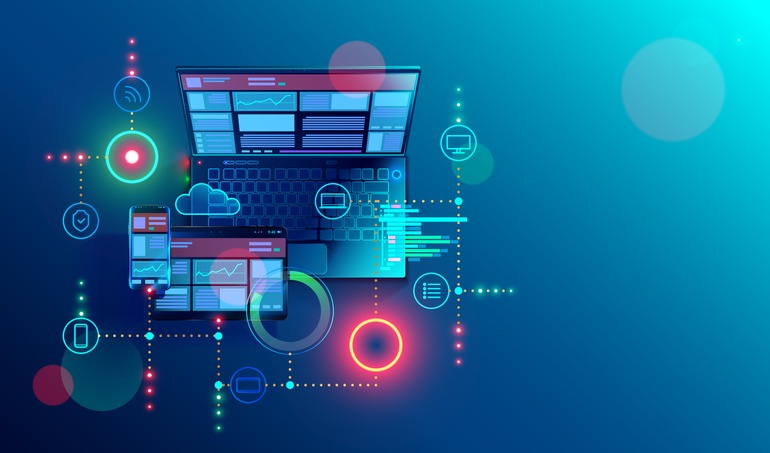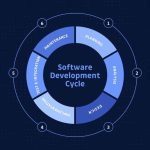Introduction: The Unsung Hero of Your Computer
Every time you turn on your computer or phone, you interact with an operating system (OS)—whether it’s Windows, macOS, Linux, or Android. But have you ever wondered what’s happening behind the scenes?
Your OS is the hidden brain of your computer, managing everything from:
✅ Running applications 🎮
✅ Handling memory 🧠
✅ Managing files 📂
✅ Enabling internet connectivity 🌐
✅ Protecting security 🔒
Let’s take a deep dive into how operating systems actually work! 🚀
1. What is an Operating System? 🖥️
An Operating System (OS) is software that manages hardware and software resources on a computer. It acts as a bridge between the user and the hardware.
Without an OS, your computer would be just a pile of electronic components with no way to interact with them!
🔹 Popular Operating Systems
✔ Windows – Most widely used for personal and business use 💼
✔ macOS – Optimized for Apple devices 🍏
✔ Linux – Preferred by programmers & servers 🖥️
✔ Android – Powers most smartphones 📱
✔ iOS – Apple’s mobile operating system 📱
🔹 OS Core Functions:
1️⃣ Process Management – Runs multiple programs simultaneously
2️⃣ Memory Management – Allocates memory to programs efficiently
3️⃣ File System Management – Organizes and stores files
4️⃣ Device Management – Controls peripherals like printers, USB, etc.
5️⃣ User Interface – Provides a way to interact (GUI/CLI)
Without these functions, your computer wouldn’t be able to do anything!
2. The OS Kernel: The Heart of Your Computer ❤️
At the core of every operating system is the kernel. Think of it as the brain that directly controls the hardware.
🔹 What Does the Kernel Do?
✅ Manages CPU tasks – Decides which program gets CPU time 🏎️
✅ Controls memory allocation – Prevents programs from interfering with each other 🧠
✅ Manages devices & drivers – Controls your keyboard, mouse, and printer 🖨️
✅ Ensures security – Restricts unauthorized access 🔒
🔹 Types of Kernels
✔ Monolithic Kernel (Linux, Windows NT) – Fast, but large in size 🏗️
✔ Microkernel (MacOS, QNX) – More stable, but slower ⚖️
💡 Fun Fact: The Linux kernel is open-source, meaning anyone can modify it!
3. How the OS Manages Processes 🏃♂️
Every time you open an app, a process is created. But how does your OS handle multiple processes at the same time?
🔹 Process Scheduling:
Your OS switches between tasks rapidly (in milliseconds), making it feel like everything runs simultaneously. This is called multitasking.
👀 Example: While watching a YouTube video, you can also browse the internet and chat with friends—your OS allocates CPU time to each process efficiently.
🔹 Process States:
1️⃣ New – The process is created
2️⃣ Ready – Waiting for CPU allocation
3️⃣ Running – Actively executing
4️⃣ Waiting – Paused until needed
5️⃣ Terminated – Process is completed
💡 Think of your OS like a chef managing multiple orders in a busy restaurant! 👨🍳
4. Memory Management: Handling RAM Efficiently 🧠
Your OS is responsible for allocating and managing memory (RAM) so that programs run smoothly without crashing.
🔹 How the OS Manages Memory:
✔ Virtual Memory – Uses part of the hard drive as “extra RAM” (Swap)
✔ Paging & Segmentation – Breaks memory into small, manageable chunks
✔ Memory Protection – Prevents apps from using memory they shouldn’t
👀 Example: Ever noticed your computer slowing down when too many tabs are open? That’s your OS struggling to allocate memory efficiently!
5. File System: Organizing Data 📂
Your OS doesn’t just store files randomly—it organizes them using a File System.
🔹 Popular File Systems:
✔ NTFS (Windows) – Secure & supports large files 🔐
✔ EXT4 (Linux) – Fast and reliable ⚡
✔ APFS (Mac) – Optimized for Apple devices 🍏
✔ FAT32 (USB Drives) – Works across all OS types 💾
💡 Why It Matters: Your OS keeps track of where files are stored, ensuring they’re accessible and protected from corruption.
6. Device Management: How the OS Talks to Your Hardware 🎧
Your OS manages all hardware devices, including:
✔ Keyboard & Mouse ⌨️🖱️
✔ Hard Drives & SSDs 💾
✔ Printers & Scanners 🖨️
✔ USB Devices & External Drives 🔌
🔹 How It Works:
📌 The OS communicates with devices using “drivers” – software that acts as a translator between hardware and software.
👀 Example: When you plug in a new printer, your OS installs the necessary driver to make it work!
7. Security & User Access: Keeping Your Computer Safe 🔒
Operating systems also provide security features to protect your data and prevent unauthorized access.
🔹 OS Security Features:
✔ User Accounts & Permissions – Restrict access to sensitive files 👤
✔ Firewalls & Antivirus Protection – Blocks cyber threats 🛡️
✔ Encryption – Protects your files from hackers 🔑
👀 Example: In Windows, an admin account can install software, but a guest account can’t make system changes—this is OS-level security!
Conclusion: Your OS is the True Powerhouse of Your Computer ⚙️
An operating system is much more than just an interface—it’s the engine that powers everything behind the scenes! 🚀
🔹 Quick Recap:
✅ The Kernel is the brain of the OS
✅ Process Management allows multitasking 🏃♂️
✅ Memory Management keeps programs running smoothly 🧠
✅ File Systems organize your data 📂
✅ Device Management controls hardware 🎧
✅ Security Features protect your system 🔒
💡 Next time you use your computer, take a moment to appreciate the complex system working tirelessly behind the scenes!


